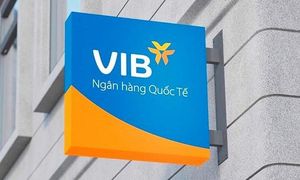In a rapidly evolving marketing landscape, brands are transitioning from a traditional Business-to-Consumer (B2C) model to a more personalized Business-to-Me (B2Me) approach. This shift marks a significant change in how companies engage with consumers, focusing on individual needs and preferences rather than broad market segments.
According to a recent report by McKinsey, 71% of consumers now expect companies to deliver personalized interactions, with 76% expressing frustration when these expectations are not met. This data underscores the growing demand for brands to move beyond generic marketing tactics and towards a more humanized approach.
The B2Me paradigm emphasizes radical relevance, shifting the focus from mass marketing to building meaningful, reciprocal relationships with individuals. No longer are brands the main characters in the consumer narrative; instead, they position themselves as guides and enablers in the consumer's journey. For instance, platforms like Spotify and Netflix have successfully utilized personalized recommendations to create unique user experiences that feel tailored to individual preferences.
This transformation is driven by three key forces: the rise of the sovereign consumer, advancements in technology, and cultural individualism. In today's attention economy, consumers expect brands to understand their needs intuitively. The availability of AI, machine learning, and rich behavioral data enables brands to anticipate customer desires and tailor their messaging accordingly.
Moreover, cultural individualism is reshaping consumer expectations. People now seek brands that reflect their identities and values, moving away from aspirational advertising to a model that emphasizes affirmation and co-creation of meaning.
However, adopting a B2Me strategy requires more than just technological investment; it necessitates a fundamental shift in mindset. Brands must prioritize understanding their customers on a deeper level, focusing not only on demographics but also on their desires, behaviors, and motivations. This involves unlocking zero-party data and utilizing behavioral insights to create personalized experiences that resonate with individuals.
In practical terms, brands need to ensure that their communications, product offerings, and customer experiences feel personal, timely, and context-aware. Achieving this at scale poses a significant challenge, but it is essential for maintaining authenticity and relevance in a crowded marketplace.
As companies strive to implement hyper-personalization, they must also navigate the complexities of aligning various departments—marketing, customer experience, IT, and product development—to break down silos and create cohesive ecosystems. The goal is to transition from calendar-based campaigns to customer-led journeys that foster genuine connections.
In another sector, the design of technology for seniors is also evolving. A recent article highlights the importance of micro-engagement in creating user-centered technology that respects the dignity and preferences of older adults. Contrary to common stereotypes, many seniors are tech-savvy and eager to engage with technology, provided it is designed with their needs in mind.
Micro-engagement strategies involve small, intentional interactions that enhance the user experience without overwhelming seniors. For example, sending a voice message with the lunch menu or a prompt asking about their enjoyment of a recent event can foster a sense of community and belonging.
Generative AI plays a crucial role in personalizing these communications. It can adapt messages to suit the preferred format and language of senior users, ensuring that technology remains accessible and relevant. This approach not only enhances user experience but also allows for continuous listening, enabling caregivers to respond effectively to the needs of residents.
The article emphasizes that if micro-engagement can be successfully implemented for seniors, it can be adapted for any demographic. By prioritizing clarity, relevance, and respect in technology design, organizations can create systems that resonate with users of all ages.
Ultimately, both the B2Me marketing approach and the focus on micro-engagement in senior tech design highlight a broader trend towards humanization in business and technology. As companies and designers recognize the importance of personal connections and tailored experiences, they can foster deeper relationships with their customers and users.
In conclusion, whether in marketing or technology design, the emphasis is shifting from broad strokes to fine details, where understanding and respecting individual needs are paramount. Brands and organizations that embrace this change will not only thrive but will also cultivate loyal communities of engaged consumers.






